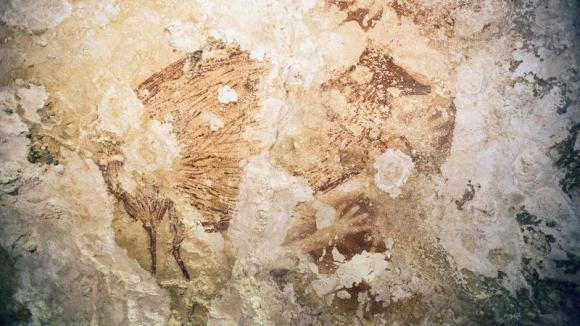World's Oldest Prehistoric Cave Art From Indonesia Questions Notions Of Europe As Birthplace of Human Culture

A painting of a "pig-deer" in a cave in the Indonesian island of Sulawesi could be the oldest known figurative work of art in the world, according to scientific dating methods.
The discovery questions established notions of Europe as the birthplace of prehistoric art and suggests that cultural development occurred simultaneously across various parts of the world, reports Reuters.
The 14 prehistoric paintings studied including 12 human hand stencils, two naturalistic animal depictions - one showing an animal called a babirusa or "pig-deer", and the other showing a pig – date back to at least 40,000 years ago, according to the study published in Nature.
"It was previously thought that Western Europe was the centre piece of a symbolic explosion in early human artistic activity such as cave painting and other forms of image-making, including figurative art, around 40,000 years ago," said dating expert Maxime Aubert of Australia's Griffith University.
He believes that cave art was made at opposite ends of the Pleistocene Eurasian world at about the same time, suggesting these practices have deeper origins — perhaps in Africa before our species left this continent and spread across the globe.
Cave art is recognised as an indicator of abstract thought believed to be the hallmark of modern human.
A pigment called red ochre was used to produce the red and mulberry-coloured paintings, reports Reuters.
The artists made the hand stencils by blowing or spraying paint around hands pressed against rock surfaces.
The caves were known to contain art but these were believed to be not older than 10,000 years old.
It was only recently that scientists set out to identify the age of the paintings using a method based on the radioactive decay of uranium in small mineral growths that formed on the paintings.
By measuring the ratio of uranium to thorium in the minerals, scientists determined the minimum age of the underlying artwork.
The hand stencil is at least about 40,000 years ago while the animal figures are at least 35,000 years old.
However, since uranium dating only provides a minimum age, these paintings could be much older, writes LiveScience.
Scientists studying the origins of art and abstract thought should shift their attention to Africa, Asia and Oceania, according to Benjamin Smith, a rock-art expert and a professor at the University of Western Australia.
© Copyright IBTimes 2025. All rights reserved.



















